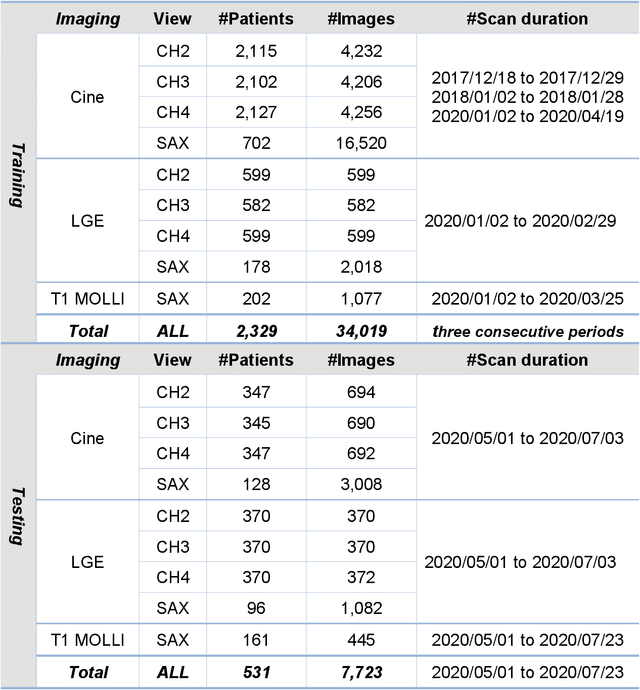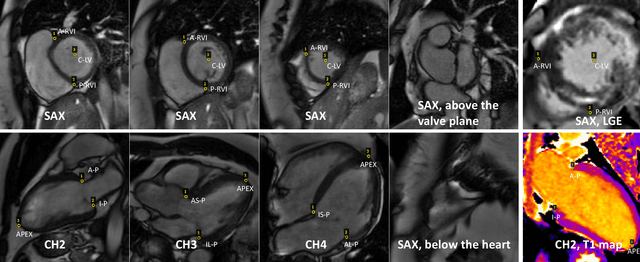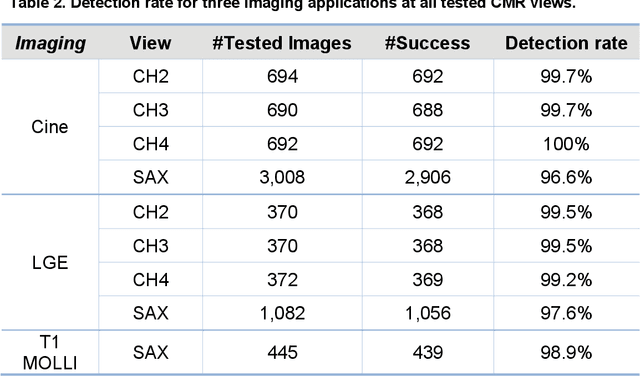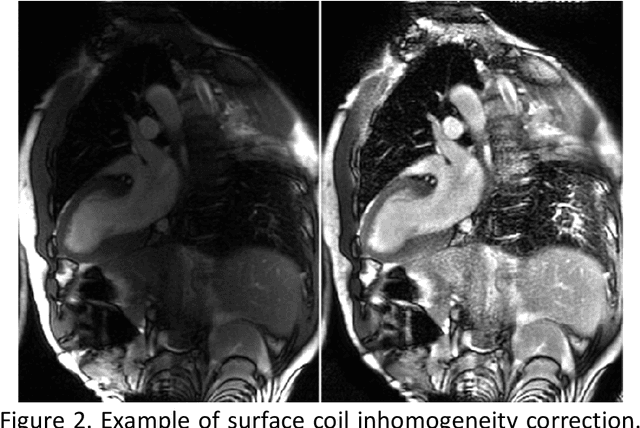Jessica Artico
Landmark detection in Cardiac Magnetic Resonance Imaging Using A Convolutional Neural Network
Aug 14, 2020



Abstract:Purpose: To develop a convolutional neural network (CNN) solution for robust landmark detection in cardiac MR images. Methods: This retrospective study included cine, LGE and T1 mapping scans from two hospitals. The training set included 2,329 patients and 34,019 images. A hold-out test set included 531 patients and 7,723 images. CNN models were developed to detect two mitral valve plane and apical points on long-axis (LAX) images. On short-axis (SAX) images, anterior and posterior RV insertion points and LV center were detected. Model outputs were compared to manual labels by two operators for accuracy with a t-test for statistical significance. The trained model was deployed to MR scanners. Results: For the LAX images, success detection was 99.8% for cine, 99.4% for LGE. For the SAX, success rate was 96.6%, 97.6% and 98.9% for cine, LGE and T1-mapping. The L2 distances between model and manual labels were 2 to 3.5 mm, indicating close agreement between model landmarks to manual labels. No significant differences were found for the anterior RV insertion angle and LV length by the models and operators for all views and imaging sequences. Model inference on MR scanner took 610ms/5.6s on GPU/CPU, respectively, for a typical cardiac cine series. Conclusions: This study developed, validated and deployed a CNN solution for robust landmark detection in both long and short-axis CMR images for cine, LGE and T1 mapping sequences, with the accuracy comparable to the inter-operator variation.
 Add to Chrome
Add to Chrome Add to Firefox
Add to Firefox Add to Edge
Add to Edge